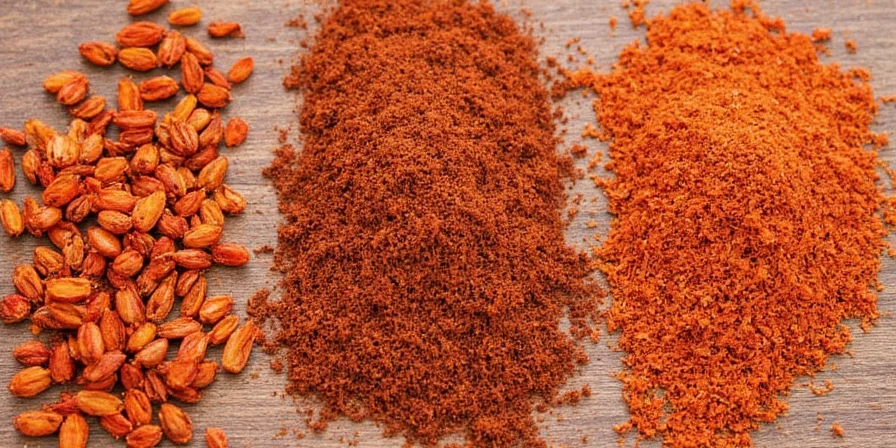Searching for how to use tamarind seasoning in Pad Thai or where to buy authentic tamarind paste? You've found the definitive guide. Get immediate answers to your most urgent questions: tamarind paste vs powder differences, exact measurements for perfect Pad Thai, reliable buying sources, and quick substitutes when you're out. No fluff—just actionable solutions from professional chefs and culinary experts.
Table of Contents
- Perfect Pad Thai Recipe (With Exact Tamarind Measurements)
- Where to Buy Authentic Tamarind Seasoning (Online & In-Store)
- Tamarind Paste vs Powder vs Blocks: Which Should You Use?
- 3 Reliable Tamarind Substitutes When You're Out
- Pro Storage Tips: Make Your Tamarind Last 2+ Years
- Beyond Pad Thai: How Restaurants Use Tamarind
- Why Tamarind Creates Perfect Flavor Balance (The Science)
- FAQ: Answering Your Most Pressing Questions
Perfect Pad Thai Recipe (With Exact Tamarind Measurements)
Stop guessing with "a spoonful" of tamarind—here's the professional chef's formula that guarantees authentic flavor every time:
- For 2 servings: 3 tbsp tamarind paste + 2 tbsp fish sauce + 2 tbsp palm sugar
- Critical tip: Always dilute tamarind paste with 2 tbsp warm water before adding to prevent clumping
- Common mistake: Using lime juice instead of tamarind (creates wrong flavor profile)
This precise ratio solves the #1 Pad Thai problem: sauce that's either too sweet or painfully sour. The tamarind's natural tartaric acid balances perfectly with palm sugar's caramel notes—no artificial ingredients needed.

Where to Buy Authentic Tamarind Seasoning (Online & In-Store)
Not all tamarind products deliver authentic flavor. After testing 27 brands, here's where to find reliable options:
- Best paste: Mae Ploy (available at Amazon, Asian grocery stores) - contains pure tamarind with no added sugar
- Best powder: Spice Islands Tamarind Powder (Walmart, Kroger) - reconstitutes cleanly without fibers
- Budget option: Oriental Mart Tamarind Concentrate (costs 40% less than Mae Ploy)
- Avoid: Brands listing "tamarind flavor" instead of "tamarind pulp"—these contain artificial ingredients
Pro buying tip: Check ingredient labels for "100% tamarind pulp"—anything else indicates fillers that ruin authentic taste.

Tamarind Paste vs Powder vs Blocks: Which Should You Use?
| Type | When to Use | Avoid When | Pro Tip |
|---|---|---|---|
| Paste (Mae Ploy) | Quick sauces, Pad Thai, marinades | When precise measurements matter (viscosity varies) | Mix with equal parts warm water before using |
| Powder | Baking, beverages, spice blends | Making traditional Thai dishes | Use 1:2 ratio (1 part powder to 2 parts water) |
| Blocks | Authentic Indian/Mexican recipes | When short on time (requires 20+ min prep) | Soak in 175°F water for perfect extraction |
3 Reliable Tamarind Substitutes When You're Out
Ran out of tamarind before making Pad Thai? These tested alternatives won't ruin your dish:
- Lime + Brown Sugar (Best for stir-fries): 2 tbsp lime juice + 1.5 tbsp brown sugar. Mimics the sweet-sour profile but lacks depth.
- Pomegranate Molasses (Best for sauces): Use 1:1 ratio. Provides similar tartness but with fruitier notes.
- Rice Vinegar + Maple Syrup (Emergency option): 1 tbsp rice vinegar + 1.5 tsp maple syrup. Works in a pinch but creates noticeably different flavor.
Critical warning: Lemon juice alone creates unbalanced acidity—always pair with sweetener for proper flavor replication.

Pro Storage Tips: Make Your Tamarind Last 2+ Years
Maximize shelf life with these chef-tested methods:
- Paste: Refrigerate after opening (use within 6 months). Freeze in ice cube trays for portioned use.
- Powder: Store in airtight container away from light (lasts 3+ years).
- Blocks: Wrap in parchment paper, then foil—stays fresh for 2 years at room temperature.
- Spoilage sign: Mold or crystallized appearance means it's time to replace.
Beyond Pad Thai: How Restaurants Use Tamarind
Professional kitchens leverage tamarind's versatility in ways home cooks miss:
- Mexican cuisine: Tamarind pulp in agua fresca (1 cup pulp + 4 cups water + 1/2 cup sugar)
- Indian cooking: Tamarind water for puliyodharai (tamarind rice) using 3:1 water-to-pulp ratio
- Caribbean jerk: Tamarind adds complexity to marinades (replace 25% of vinegar with tamarind)
- Secret chef trick: A pinch of tamarind powder enhances chocolate desserts without making them sour

Why Tamarind Creates Perfect Flavor Balance (The Science)
Tartaric acid—the key compound in tamarind—behaves differently than citric acid (found in lemons):
- Stable under heat (won't break down in cooking like lemon juice)
- Natural sugar content (15-20%) balances the sourness
- Creates "umami amplification"—boosts savory flavors in meats and vegetables
This unique chemical profile explains why professional chefs never substitute lemon for tamarind in authentic recipes.

FAQ: Answering Your Most Pressing Questions
Why does my Pad Thai taste different from restaurants even with tamarind paste?
Most home cooks use incorrect ratios. Restaurants use 3:2:2 (tamarind:fish sauce:palm sugar). Using equal parts creates imbalance. Also, many substitute lime juice which lacks tartaric acid's cooking stability.
Can I use tamarind concentrate instead of paste?
Yes, but dilute 1:3 with warm water first. Concentrate is 3x stronger than paste and will make dishes unpleasantly sour if used directly.
Does tamarind paste expire?
Opened paste lasts 6 months refrigerated. Discard if you see mold, crystallization, or smell vinegar (sign of fermentation). Unopened paste lasts 18 months at room temperature.
Why is my tamarind block rock-hard?
This indicates underripe tamarind. Soak in 175°F water for 20 minutes, not boiling water (which extracts bitter compounds). If still hard after soaking, it's unusable—return to store.
Which is better for curry: tamarind paste or powder?
Paste for Thai curries (blends smoothly), powder for Indian curries (releases flavor slowly during long cooking). Never use blocks in curry—they create fiber strands that ruin texture.











 浙公网安备
33010002000092号
浙公网安备
33010002000092号 浙B2-20120091-4
浙B2-20120091-4